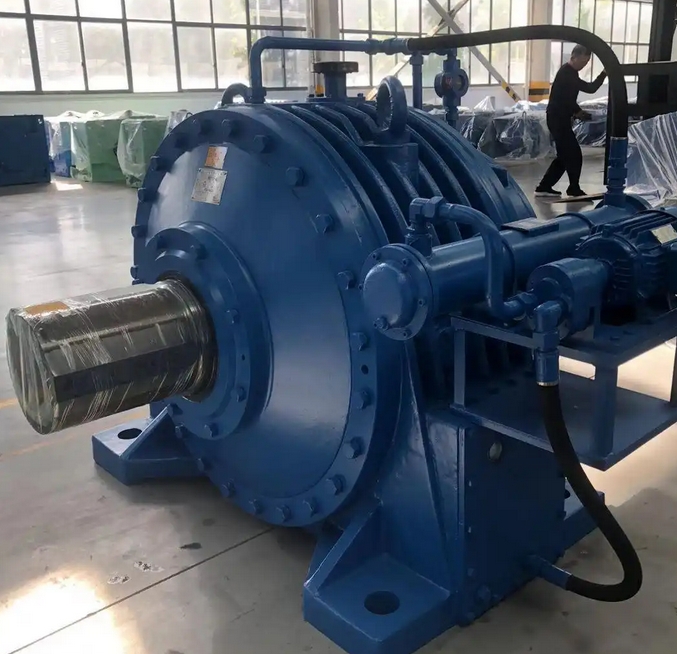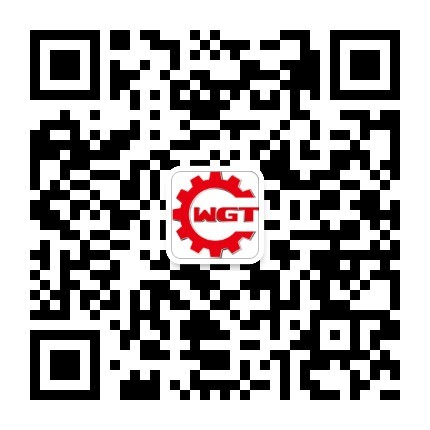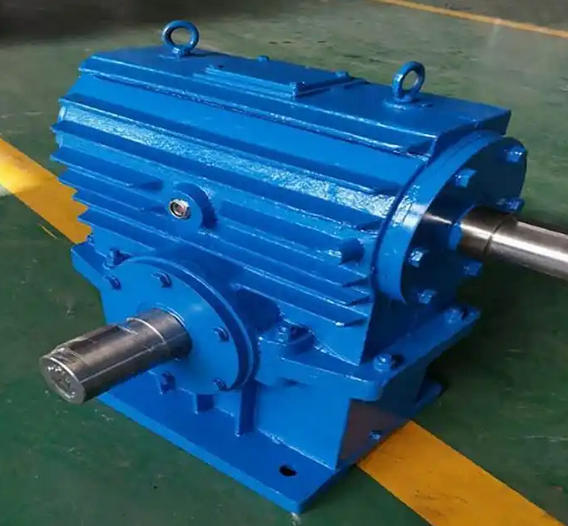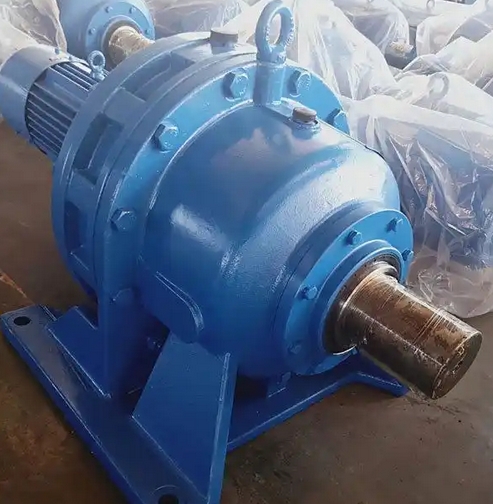What are the common deformation conditions of the shaft system in NBD315-35.5 planetary reducers?
The deformation of planetary planetary reducers shaft system is a common cause of transmission failure, and its deformation type is closely related to the stress state, installation accuracy, and working conditions. The following are common deformation situations, characteristics, impacts, and troubleshooting methods of shaft systems:1、 Bending deformation of the shaft
1. Deformation characteristics

The axis of the shaft deviates from a straight line and presents a unidirectional or bidirectional bending (such as "bow" or "wave").
Radial runout exceeding tolerance (when detected with a dial gauge, the pointer swing amplitude is greater than the tolerance value after one rotation of the shaft, usually ≤ 0.05mm).
2. Main reasons
Uneven axial force distribution: The foundation settlement causes the bearing seat to tilt, resulting in the bearing bearing bearing being subjected to unbalanced load, causing the rear axle to bend after long-term operation.
Overload or impact load: Frequent starting, sudden load changes, or poor gear meshing (such as tooth breakage) can cause instantaneous impact, resulting in local plastic deformation of the shaft.
Installation error: The coaxiality between the motor and the input shaft of the reducer exceeds the standard (such as deviation>0.1mm), forcing the shaft to bear additional bending moments.
3. Impact consequences
Gear meshing is biased, exacerbating tooth surface wear or tooth breakage.
Abnormal heating, increased vibration, and even jamming of bearings due to loss of clearance.
The wear of the sealing components intensifies, causing oil leakage (such as scratches on the oil seal lip at the shaft extension due to shaft bending).
2、 Torsional deformation of the shaft
1. Deformation characteristics
The two end sections of the shaft rotate relative to each other around the axis, and wear marks appear on the keyway or spline teeth.
There is no obvious abnormality when unloaded, but after loading, the output speed fluctuates and the torque transmission efficiency decreases.
2. Main reasons
Long term overload operation: The actual load exceeds the allowable torque of the shaft (for example, the rated torque of the NBD560-112 model shaft is 5600N · m, and overloading by more than 20% can easily cause torsion).
Uneven gear mesh stiffness: If the clearance between the planetary gear and the sun gear is not consistent, it can cause periodic torsional vibration on the shaft during torque transmission.
3. Impact consequences
Failure of spline or flat key connection (key cutting or shaft keyway wear).
Fatigue cracks may occur in the shaft material, especially in stress concentrated areas such as tool grooves and rounded corners, which may eventually lead to fracture.
3、 Radial wear and deformation of the shaft
1. Deformation characteristics
The diameter of the shaft neck (bearing fitting) or shaft extension (coupling/gear fitting) decreases, and the surface roughness deteriorates (scratches, grooves appear).
The fit clearance exceeds the standard (such as the interference fit between the inner ring of the bearing and the shaft neck becoming a clearance fit, and the bearing can be slightly shaken by hand).
2. Main reasons
Improper installation of bearings: knocking on the installed bearings can cause neck strain, or long-term "running" (relative rotation between the bearing inner ring and the shaft) wear on the shaft surface.
Insufficient lubrication: The lack of oil in the bearing causes dry friction, and heat is conducted to the shaft neck, resulting in local annealing and a decrease in hardness.
3. Impact consequences
The bearings produce vibration and abnormal noise due to loose fit, accelerating wear.
The decrease in gear transmission accuracy (such as planetary gear shaft wear causing planetary gear deflection) can lead to transmission shock.



